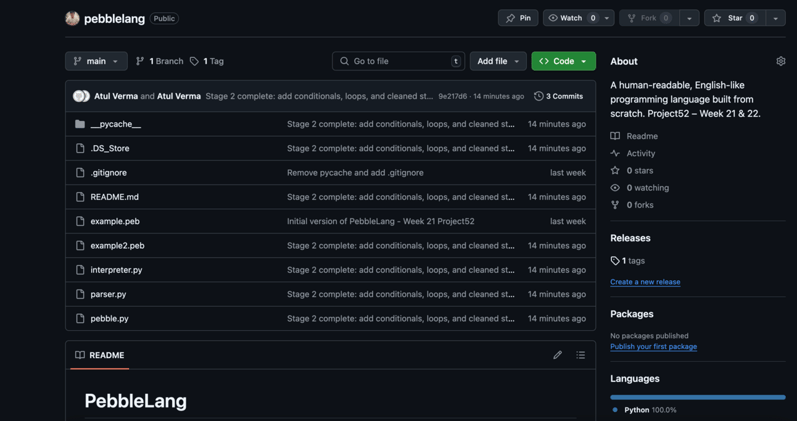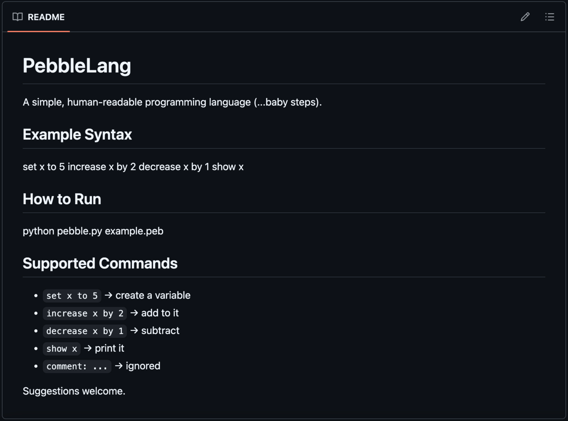- Atul for Marketing
- Topics
- Python

I Taught My Programming Language to Think in Blocks
In Week 22 of Project52, I evolved PebbleLang from a flat, single-line interpreter into a structured, block-aware language by adding support for conditionals and loops. This meant rewriting the parser to detect and group if ... then ... end and repeat ... times: ... end blocks, and updating the interpreter to evaluate nested logic. With these additions, PebbleLang can now make decisions and repeat actions - core capabilities of any real programming language. While still minimal, this version introduces control flow, making the language feel far more expressive and complete.


I Built a Programming Language from Scratch
PebbleLang is a minimalist, human-readable programming language built entirely from scratch using Python. Designed to feel more like natural language than code, it lets you write commands like set x to 5 and increase x by 3 instead of traditional syntax. The goal was to explore the foundations of programming by creating a fully working parser and interpreter that anyone can read, understand, and modify - even without prior experience building languages.


Watching the Internet Talk: A Beginner’s Packet Sniffer in Python
In this project, I built a lightweight packet sniffer using Python and the Scapy library to capture and inspect live network traffic at the transport and network layers. The goal was to understand, from first principles, how data flows through a system when it connects to the internet. By parsing IP, TCP, UDP, and ICMP packets in real-time, the tool reveals exactly who your machine is talking to, over which ports and protocols, and at what stage of communication—handshake, data transfer, or teardown. It’s a raw, low-level window into the internet’s pulse, built entirely from scratch for educational exploration.


Built an Emergence Simulator Using Conway’s Game of Life
For Week 10 of Project52, I built an interactive simulator based on Conway’s Game of Life, designed as a six-chapter experience to showcase how structured behaviors — like motion, repetition, reproduction, and even computation — can emerge from simple, rule-based systems. Instead of a freeform sandbox, this project guides users through curated scenarios that reveal key properties of emergent complexity, making it both a technical build and a visual storytelling tool for understanding how logic can evolve into lifelike behavior.

